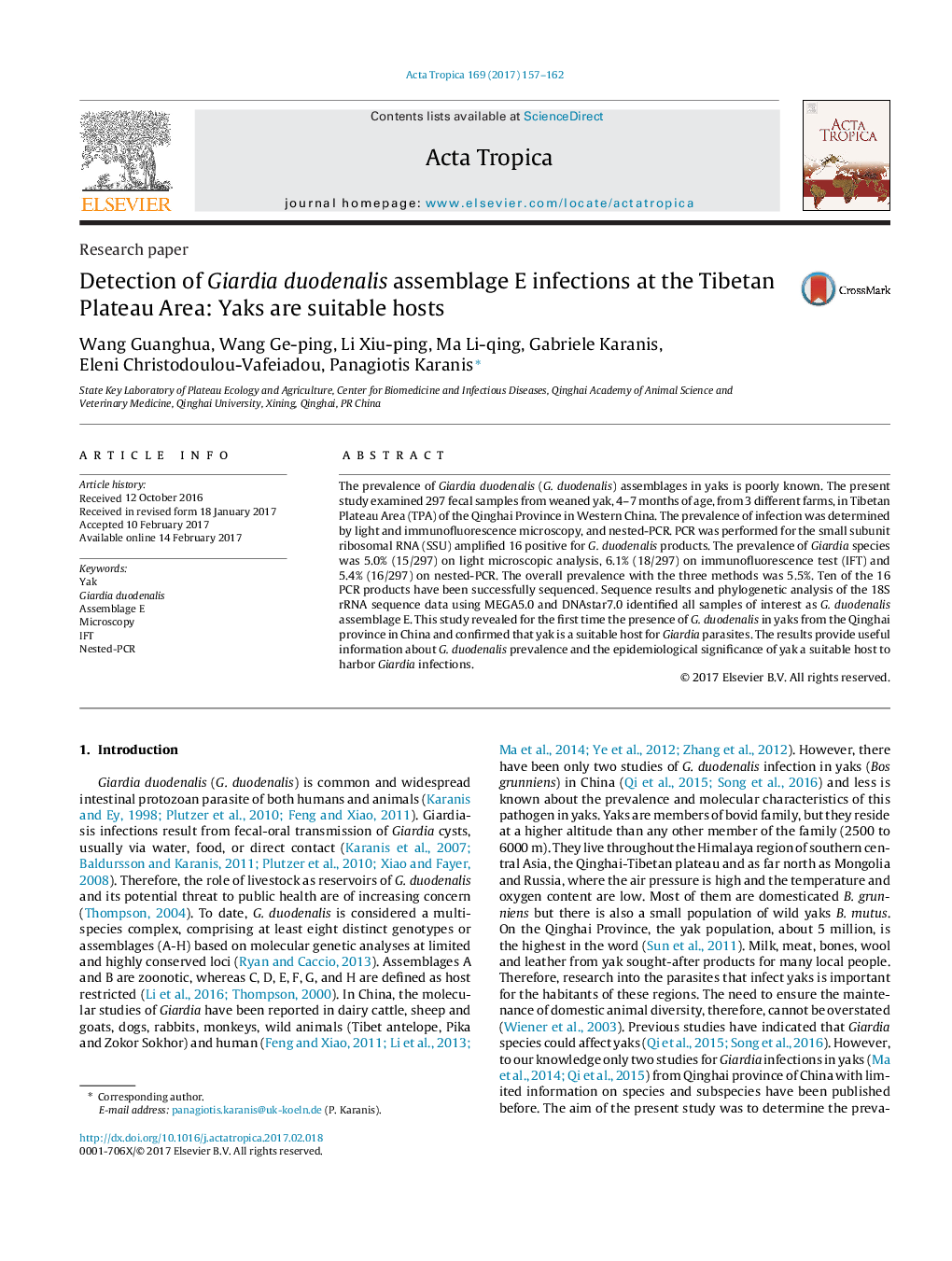| Article ID | Journal | Published Year | Pages | File Type |
|---|---|---|---|---|
| 5670867 | Acta Tropica | 2017 | 6 Pages |
â¢Giardia spp were detected using LM, IFT and PCR in feces from Yaks.â¢The overall prevalence was 6.1%.â¢Genotyping with the small subunit ribosomal RNA (SSU) was performed.â¢G. duodenalis assemblage E has been found the only assemblage in yaks in the Qinghai province.â¢Yaks survived in harsh conditions are suitable hosts for Giardia parasites.
The prevalence of Giardia duodenalis (G. duodenalis) assemblages in yaks is poorly known. The present study examined 297 fecal samples from weaned yak, 4-7 months of age, from 3 different farms, in Tibetan Plateau Area (TPA) of the Qinghai Province in Western China. The prevalence of infection was determined by light and immunofluorescence microscopy, and nested-PCR. PCR was performed for the small subunit ribosomal RNA (SSU) amplified 16 positive for G. duodenalis products. The prevalence of Giardia species was 5.0% (15/297) on light microscopic analysis, 6.1% (18/297) on immunofluorescence test (IFT) and 5.4% (16/297) on nested-PCR. The overall prevalence with the three methods was 5.5%. Ten of the 16 PCR products have been successfully sequenced. Sequence results and phylogenetic analysis of the 18S rRNA sequence data using MEGA5.0 and DNAstar7.0 identified all samples of interest as G. duodenalis assemblage E. This study revealed for the first time the presence of G. duodenalis in yaks from the Qinghai province in China and confirmed that yak is a suitable host for Giardia parasites. The results provide useful information about G. duodenalis prevalence and the epidemiological significance of yak a suitable host to harbor Giardia infections.
